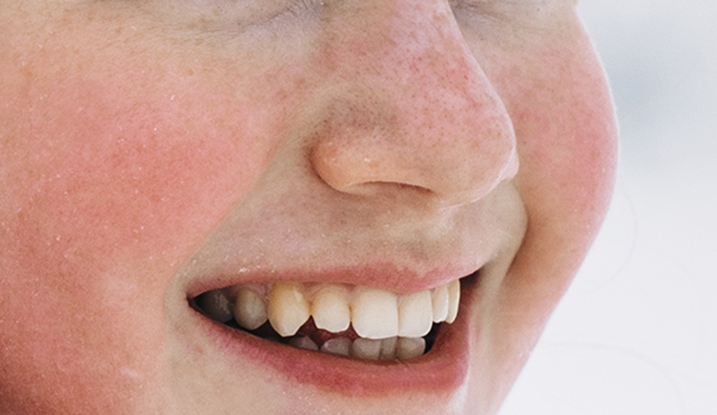Skin flushing, or blushing, is a normal part of how your body reacts to things in your environment. It causes your cheeks, neck or upper chest to turn red or darker temporarily. You might have skin flushing after showing affection or during an embarrassing situation. You may show skin flushing after drinking alcohol. It goes away on its own.
Advertisement
Cleveland Clinic is a non-profit academic medical center. Advertising on our site helps support our mission. We do not endorse non-Cleveland Clinic products or services. Policy

Skin flushing is the sudden increase of blood flow to your cheeks, neck or upper chest. This causes your skin to turn red or darker than your natural skin tone. You may also feel heat rushing to these parts of your body. It may make you sweat.
Advertisement
Cleveland Clinic is a non-profit academic medical center. Advertising on our site helps support our mission. We do not endorse non-Cleveland Clinic products or services. Policy
The change to your skin is temporary. It’s usually a reaction to something in your environment. You might feel flushed after doing a heavy workout or drinking alcohol.
Flushed skin is the same as blushing. Most often, blushing is a reaction to strong emotions like affection or embarrassment.
Skin flushing is more noticeable on medium to light skin tones. It causes your cheeks, neck or upper chest to suddenly turn red to purple. If you have a dark skin tone, it can cause the skin on these parts of your body to darken slightly.
Increased blood flow to your head, face, neck or upper chest causes flushed skin. The most common reasons why this happens could include:
Skin flushing could be a symptom of, or happen with, an underlying condition like:
Several medications may cause this symptom as a side effect, including:
Skin flushing is usually a temporary symptom that will go away without treatment.
Advertisement
You may need to see a healthcare provider if you know you have an underlying condition that causes flushing or if you have skin flushing frequently without a known cause. Your provider may recommend testing and treatment to diagnose and manage the underlying condition.
If you have high levels of stress or anxiety that cause you to experience a lot of intense emotions, you may choose to see a mental health professional.
You can manage skin flushing at home by:
It could take a few minutes to a couple of hours before your skin returns to normal. The timeframe varies based on the cause.
If a strong emotion is the culprit, symptoms may go away once you relax or bring your stress level down. Breathing exercises, like taking a deep breath in through your nose and exhaling slowly through your mouth, help reduce stress.
If skin flushing is a reaction to drinking alcohol, it could take a couple of hours for it to go away as the effects of the alcohol wear off.
Skin flushing can make an emotional moment even more stressful. Your face tells a story you might not want to say out loud. And they’re common: from a childhood crush to an embarrassing event. We’ve all been there!
The good news? Skin flushing is temporary and usually nothing to worry about. But if it happens more often than you’d like, talk to a healthcare provider. They can help uncover the cause and reduce those unpleasant blushing moments.
Advertisement
Need care fast? Cleveland Clinic’s Express Care and Urgent Care locations treat everything from sprains to sinus infections — no appointment needed.

Last reviewed on 05/02/2025.
Learn more about the Health Library and our editorial process.